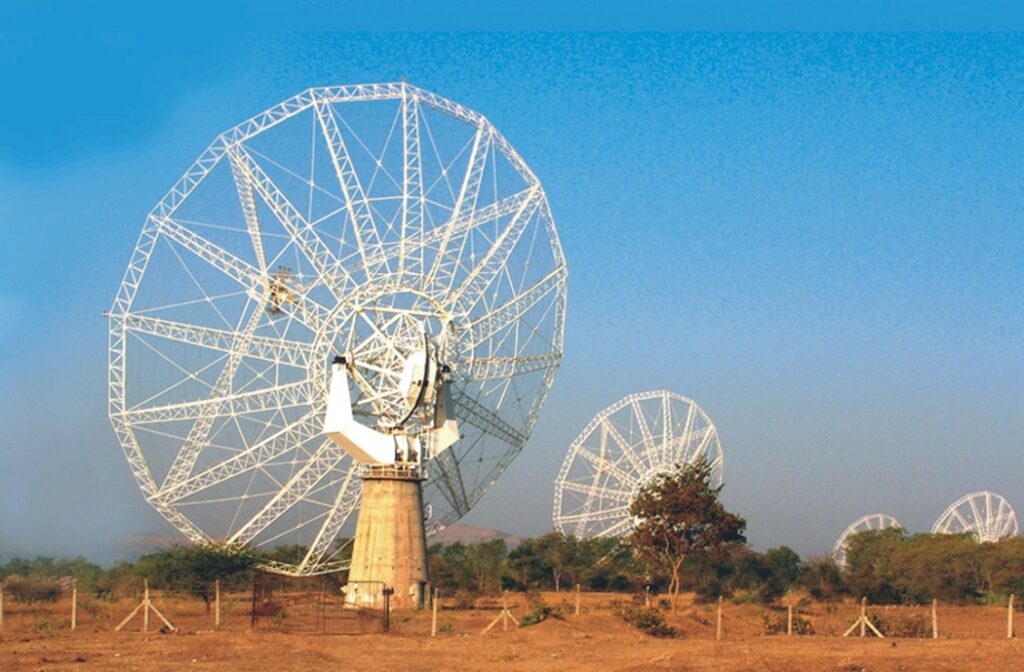Manasi Saraf Joshi
Pune, 6th September 2021: In what could be an interesting discovery, a group of 40 astronomers have given clear evidence of unexpected changes in a millisecond radio pulsar. They made use of the upgraded Giant Metrewave Radio Telescope (UGMRT) for it. Under the banner of the Indian Pulsar Timing Array (InPTA).
These results have recently been published as a rapid communication in the Journal Monthly Notices of Royal Astronomical Society Letters. The link to the paper is https://doi.org/10.1093/mnrasl/slab098 .
While explaining to PunekarNews.in, the lead researcher BC Joshi said, “These stars (millisecond pulsars) are special as they emit clock-like pulses, which are very regular (tick … tick … tick …- like a clock) and their pulse shape never changes and neither is expected to change. InPTA astronomers have confirmed for the first time a change in the pulse shape. This is a new phenomenon suggesting changes on this star not seen before. It emits radio radiation differently than before. This also affects its use to detect gravitational waves.
What is its significance?
Further stating he said, “One needs 50 or so very good celestial clocks to detect nano-Hz gravitational waves. International Pulsar Timing Array experiment (IPTA), where the uGMRT and the Indian Pulsar Timing Array (InPTA) contributes data for detecting these waves is close to discovering these waves. This road just became harder as one of the best clocks seems to have a glitch – that its emission seems to have changed -as confirmed by us”.
“Among the set of pulsars being observed, PSR J1713+0747 is one of the most reliable clocks of them all. Ongoing observations between April and May 2021 and thereafter revealed strong evidence of a fingerprint change in this star disturbing its rhythm and clock behaviour. The InPTA team continued to observe this pulsar to track the changes following this event. With the low radio frequency observations that only the uGMRT can provide, the team has established that the change in this event was much larger than ever observed before in any other pulsar clock used in PTA experiments. As these experiments require exquisite timing observations, such a change needs to be accounted for to make reliable detection of nanohertz gravitational waves”, he explained.
How will it help in understanding the universe in a better manner?
The universe is full of ultra-low frequency gravitational waves. These waves in the nano-Hz range are produced when two huge black holes, usually in the centres of galaxies, revolve around each other. The addition of these waves from several such binary black holes produces a cacophony of background, much like the sound of hundreds talking in a bazaar.
When these waves pass near earth, they change the clock rate of a millisecond pulsar in a similar fashion. Observing many such pulsar clocks, each with a different clock tick makes a celestial detector capable of detecting these waves. By measuring these waves, we can understand how the small galaxies merged to form bigger ones and how the universe evolved.
